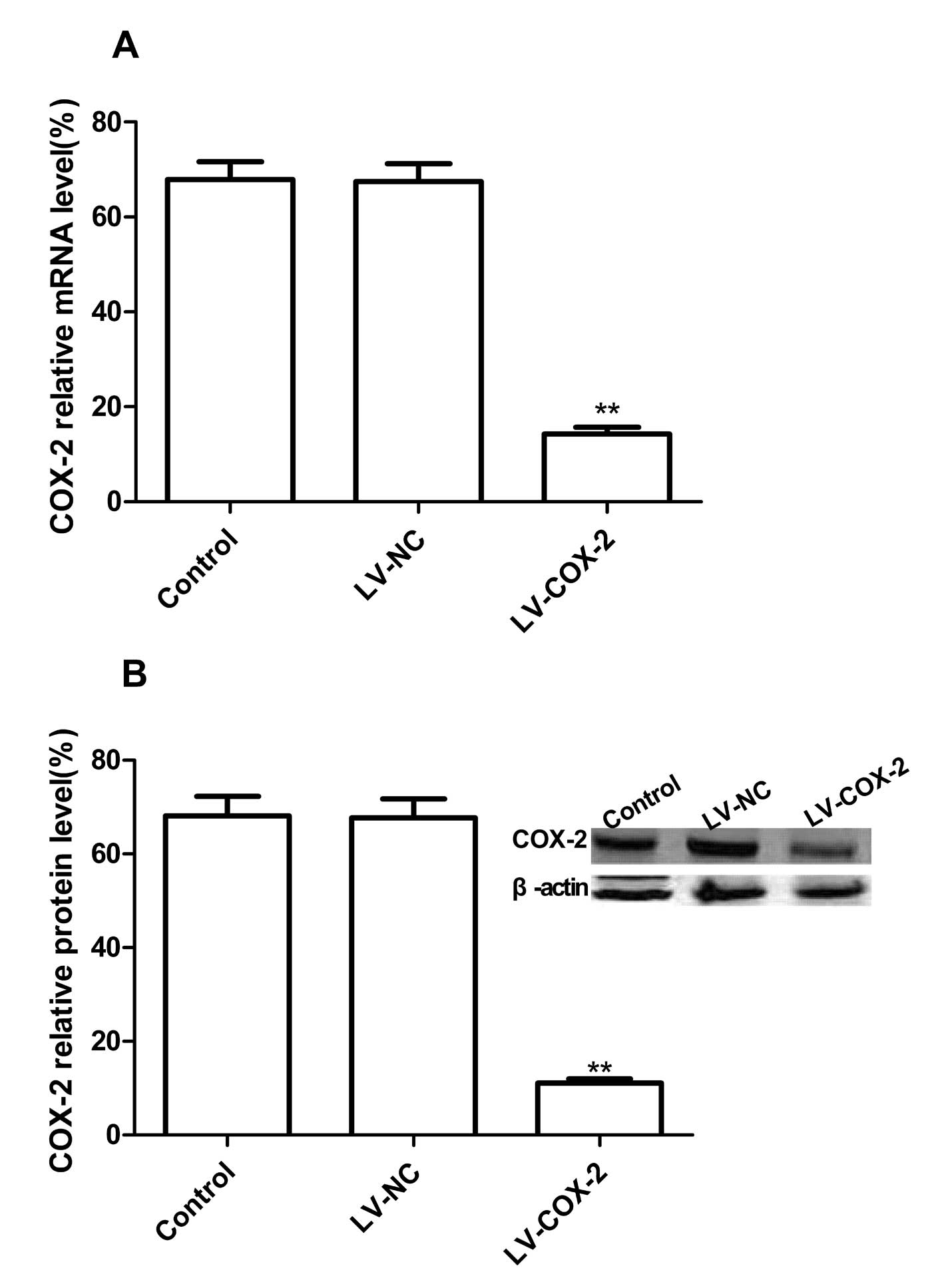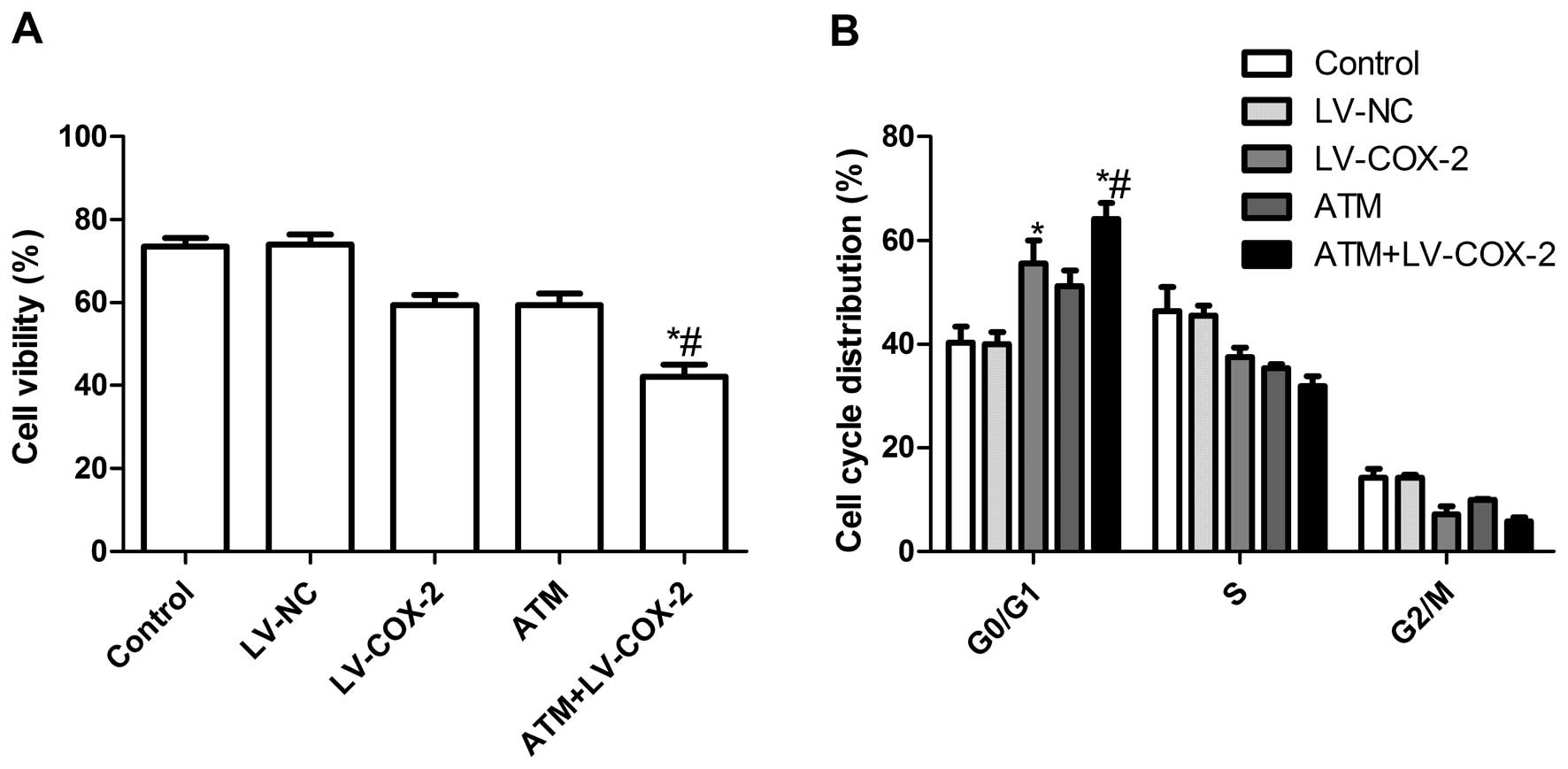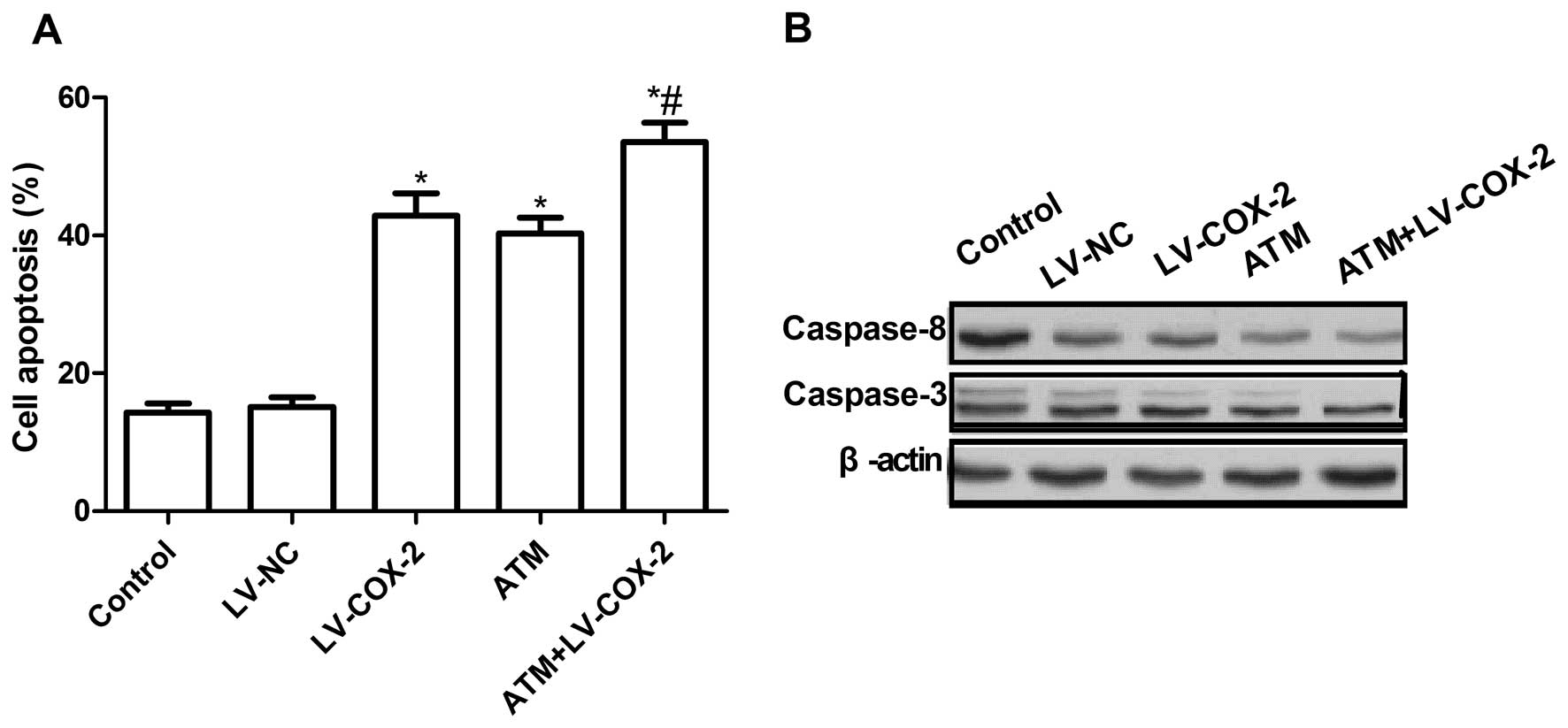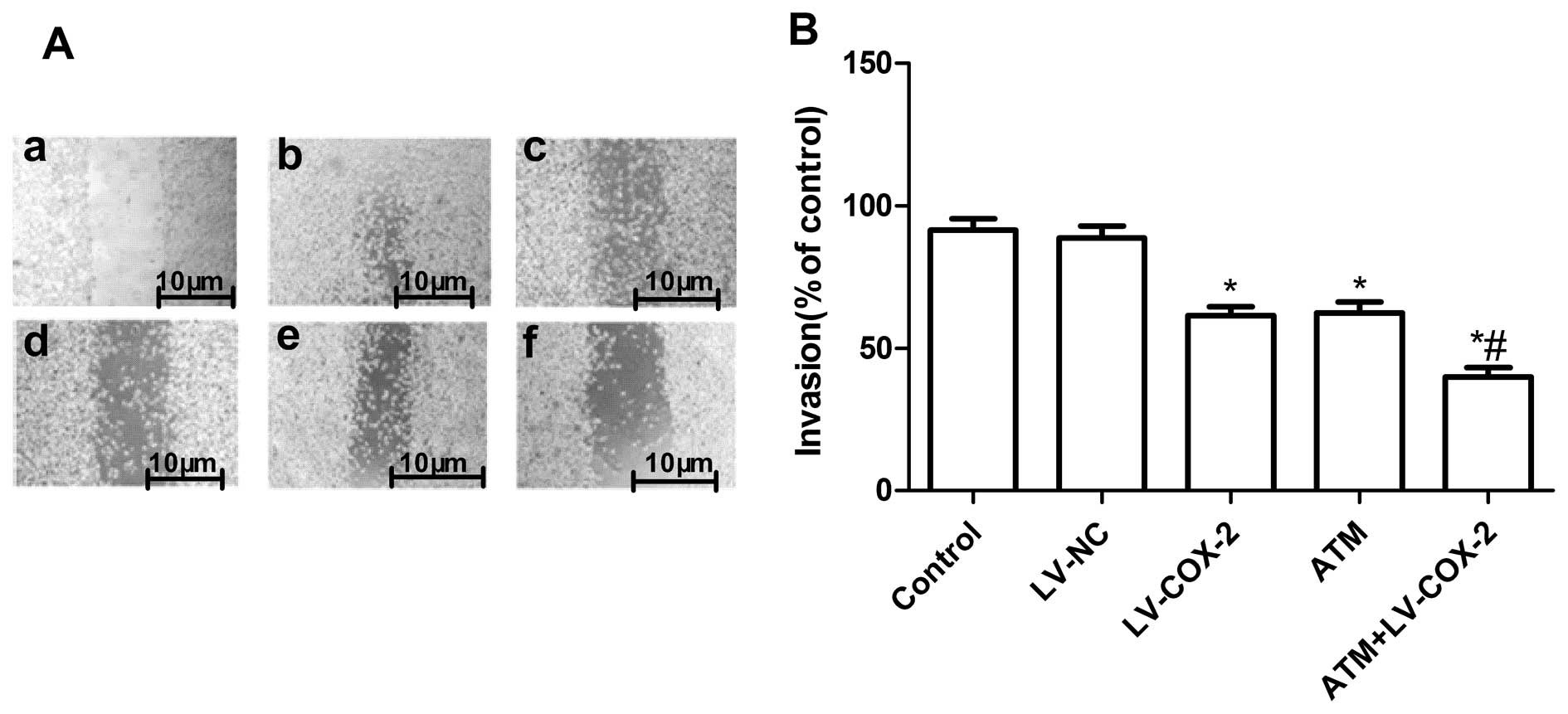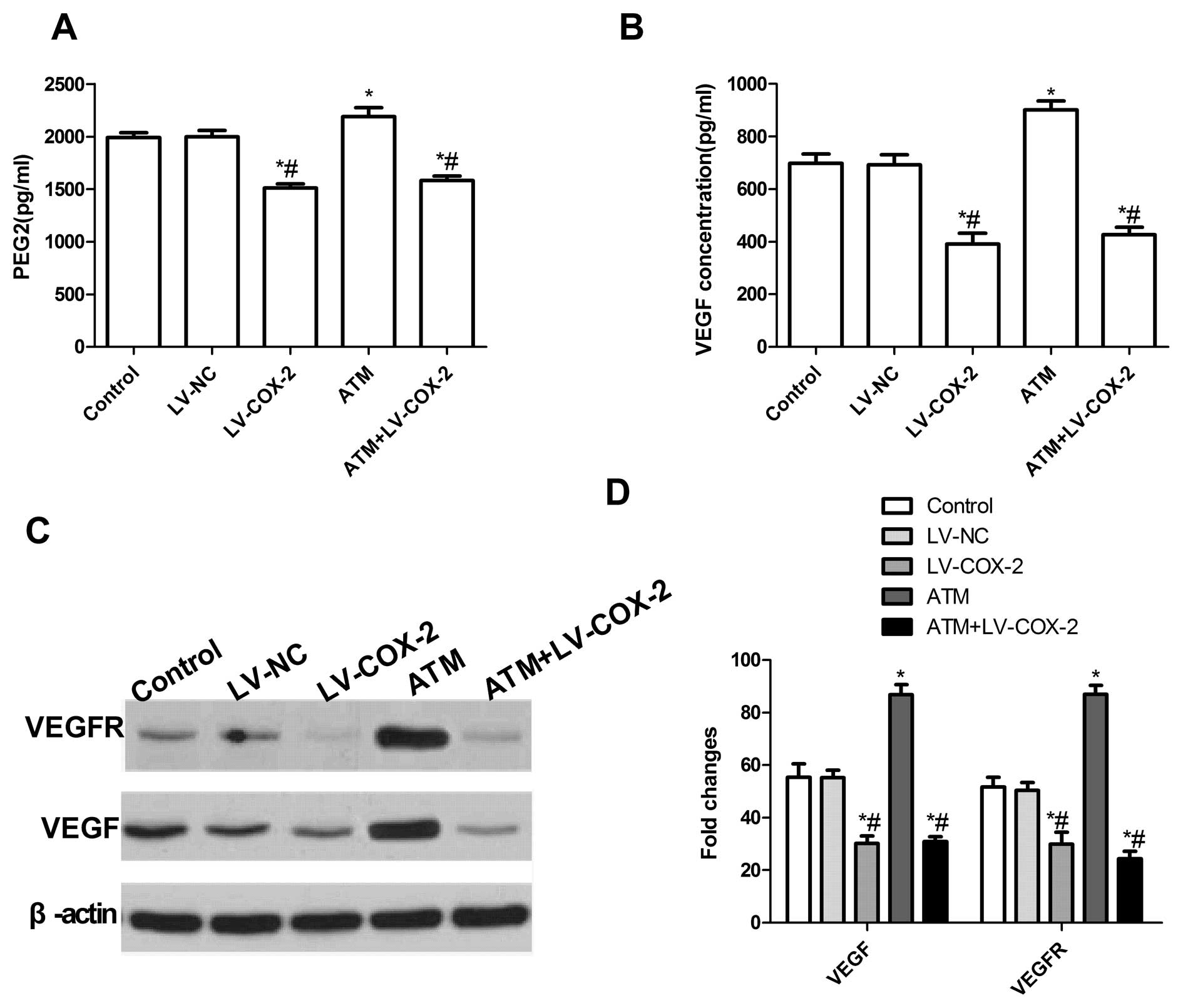|
1.
|
Jordan VC and O’Malley BW: Selective
estrogen-receptor modulators and antihormonal resistance in breast
cancer. J Clin Oncol. 25:5815–5824. 2007. View Article : Google Scholar : PubMed/NCBI
|
|
2.
|
Brauch H and Jordan VC: Targeting of
tamoxifen to enhance antitumour action for the treatment and
prevention of breast cancer: the ‘personalised’ approach? Eur J
Cancer. 45:2274–2283. 2009.PubMed/NCBI
|
|
3.
|
Cuzick J, Sestak I, Pinder SE, et al:
Effect of tamoxifen and radiotherapy in women with locally excised
ductal carcinoma in situ: long-term results from the UK/ANZ DCIS
trial. Lancet Oncol. 12:21–29. 2011. View Article : Google Scholar : PubMed/NCBI
|
|
4.
|
Roberts CG, Millar EK, O’Toole SA, et al:
Identification of PUMA as an estrogen target gene that mediates the
apoptotic response to tamoxifen in human breast cancer cells and
predicts patient outcome and tamoxifen responsiveness in breast
cancer. Oncogene. 30:3186–3197. 2011. View Article : Google Scholar : PubMed/NCBI
|
|
5.
|
Garvin S, Nilsson UW and Dabrosin C:
Effects of oestradiol and tamoxifen on VEGF, soluble VEGFR-1, and
VEGFR-2 in breast cancer and endothelial cells. Br J Cancer.
93:1005–1010. 2005. View Article : Google Scholar : PubMed/NCBI
|
|
6.
|
Qu Z, Van Ginkel S, Roy AM, et al:
Vascular endothelial growth factor reduces tamoxifen efficacy and
promotes metastatic colonization and desmoplasia in breast tumors.
Cancer Res. 68:6232–6240. 2008. View Article : Google Scholar : PubMed/NCBI
|
|
7.
|
Majeti BK, Lee JH, Simmons BH and Shojaei
F: VEGF is an important mediator of tumor angiogenesis in malignant
lesions in a genetically engineered mouse model of lung
adenocarcinoma. BMC Cancer. 13:2132013. View Article : Google Scholar : PubMed/NCBI
|
|
8.
|
Chen CT and Hung MC: Beyond anti-VEGF:
dual-targeting antiangiogenic and antiproliferative therapy. Am J
Transl Res. 5:393–403. 2013.PubMed/NCBI
|
|
9.
|
Breinig M, Schirmacher P and Kern MA:
Cyclooxygenase-2 (COX-2) - a therapeutic target in liver cancer?
Curr Pharm Des. 13:3305–3315. 2007. View Article : Google Scholar : PubMed/NCBI
|
|
10.
|
Stasinopoulos I, O’Brien DR, Wildes F,
Glunde K and Bhujwalla ZM: Silencing of cyclooxygenase-2 inhibits
metastasis and delays tumor onset of poorly differentiated
metastatic breast cancer cells. Mol Cancer Res. 5:435–442. 2007.
View Article : Google Scholar : PubMed/NCBI
|
|
11.
|
de Heer P, Sandel MH, Guertens G, et al:
Celecoxib inhibits growth of tumors in a syngeneic rat liver
metastases model for colorectal cancer. Cancer Chemother Pharmacol.
62:811–819. 2008.PubMed/NCBI
|
|
12.
|
Narayanan BA, Narayanan NK, Davis L and
Nargi D: RNA interference-mediated cyclooxygenase-2 inhibition
prevents prostate cancer cell growth and induces differentiation:
modulation of neuronal protein synaptophysin, cyclin D1, and
androgen receptor. Mol Cancer Ther. 5:1117–1125. 2006. View Article : Google Scholar
|
|
13.
|
Singh-Ranger G, Salhab M and Mokbel K: The
role of cyclooxygenase-2 in breast cancer: review. Breast Cancer
Res Treat. 109:189–198. 2008. View Article : Google Scholar : PubMed/NCBI
|
|
14.
|
Hoeben A, Landuyt B, Highley MS, Wildiers
H, Van Oosterom AT and De Bruijn EA: Vascular endothelial growth
factor and angiogenesis. Pharmacol Rev. 56:549–580. 2004.
View Article : Google Scholar : PubMed/NCBI
|
|
15.
|
Hasegawa K, Ichikawa W, Fujita T, et al:
Expression of cyclooxygenase-2 (COX-2) mRNA in human colorectal
adenomas. Eur J Cancer. 37:1469–1474. 2001. View Article : Google Scholar : PubMed/NCBI
|
|
16.
|
Kumar BN, Rajput S, Dey KK, et al:
Celecoxib alleviates tamoxifen-instigated angiogenic effects by
ROS-dependent VEGF/VEGFR2 autocrine signaling. BMC Cancer.
13:2732013. View Article : Google Scholar : PubMed/NCBI
|
|
17.
|
Lacroix I, Lapeyre-Mestre M, Bagheri H, et
al: Nonsteroidal anti-inflammatory drug-induced liver injury: a
case-control study in primary care. Fundam Clin Pharmacol.
18:201–206. 2004. View Article : Google Scholar : PubMed/NCBI
|
|
18.
|
Rudnick DA, Shikapwashya O, Blomenkamp K
and Teckman JH: Indomethacin increases liver damage in a murine
model of liver injury from alpha-1-antitrypsin deficiency.
Hepatology. 44:976–982. 2006. View Article : Google Scholar : PubMed/NCBI
|
|
19.
|
Park JW, Park JE, Lee JA, Lee CW and Kim
CM: Cyclooxygenase-2 (COX-2) is directly involved but not decisive
in proliferation of human hepatocellular carcinoma cells. J Cancer
Res Clin Oncol. 132:184–192. 2006. View Article : Google Scholar : PubMed/NCBI
|
|
20.
|
Wang R, Wang X, Lin F, Gao P, Dong K and
Zhang HZ: shRNA-targeted cyclooxygenase (COX)-2 inhibits
proliferation, reduces invasion and enhances chemosensitivity in
laryngeal carcinoma cells. Mol Cell Biochem. 317:179–188. 2008.
View Article : Google Scholar : PubMed/NCBI
|
|
21.
|
Lin T, Gu J, Zhang L, et al: Enhancing
adenovirus-mediated gene transfer in vitro and in vivo by addition
of protamine and hydrocortisone. J Gene Med. 5:868–875. 2003.
View Article : Google Scholar : PubMed/NCBI
|
|
22.
|
Coleman JE, Huentelman MJ, Kasparov S, et
al: Efficient large-scale production and concentration of
HIV-1-based lentiviral vectors for use in vivo. Physiol Genomics.
12:221–228. 2003.PubMed/NCBI
|
|
23.
|
Deglon N, Tseng JL, Bensadoun JC, et al:
Self-inactivating lentiviral vectors with enhanced transgene
expression as potential gene transfer system in Parkinson’s
disease. Hum Gene Ther. 11:179–190. 2000.PubMed/NCBI
|
|
24.
|
Tai MH, Weng CH, Mon DP, Hu CY and Wu MH:
Ultraviolet C irradiation induces different expression of
cyclooxygenase 2 in NIH 3T3 cells and A431 cells: the roles of
COX-2 are different in various cell lines. Int J Mol Sci.
13:4351–4366. 2012. View Article : Google Scholar
|
|
25.
|
Frasor J, Danes JM, Komm B, Chang KC,
Lyttle CR and Katzenellenbogen BS: Profiling of estrogen up- and
down- regulated gene expression in human breast cancer cells:
insights into gene networks and pathways underlying estrogenic
control of proliferation and cell phenotype. Endocrinology.
144:4562–4574. 2003. View Article : Google Scholar : PubMed/NCBI
|
|
26.
|
Renoir JM, Bouclier C, Seguin A, Marsaud V
and Sola B: Antioestrogen-mediated cell cycle arrest and apoptosis
induction in breast cancer and multiple myeloma cells. J Mol
Endocrinol. 40:101–112. 2008. View Article : Google Scholar
|
|
27.
|
Zheng J and Yao Z: Effect of tamoxifen on
apoptosis and drug resistance of breast cancer cells in vitro.
Zhonghua Zhong Liu Za Zhi. 22:55–57. 2000.In Chinese.
|
|
28.
|
Thiantanawat A, Long BJ and Brodie AM:
Signaling pathways of apoptosis activated by aromatase inhibitors
and antiestrogens. Cancer Res. 63:8037–8050. 2003.
|
|
29.
|
Rajput S, Kumar BN, Sarkar S, et al:
Targeted apoptotic effects of thymoquinone and tamoxifen on XIAP
mediated Akt regulation in breast cancer. PLoS One. 8:e613422013.
View Article : Google Scholar : PubMed/NCBI
|
|
30.
|
Blackwell KL, Haroon ZA, Shan S, et al:
Tamoxifen inhibits angiogenesis in estrogen receptor-negative
animal models. Clin Cancer Res. 6:4359–4364. 2000.PubMed/NCBI
|
|
31.
|
Marson LP, Kurian KM, Miller WR and Dixon
JM: The effect of tamoxifen on breast tumour vascularity. Breast
Cancer Res Treat. 66:9–15. 2001. View Article : Google Scholar : PubMed/NCBI
|
|
32.
|
Garvin S and Dabrosin C: Tamoxifen
inhibits secretion of vascular endothelial growth factor in breast
cancer in vivo. Cancer Res. 63:8742–8748. 2003.
|
|
33.
|
McNamara DA, Harmey J, Wang JH, Kay E,
Walsh TN and Bouchier-Hayes DJ: Tamoxifen inhibits endothelial cell
proliferation and attenuates VEGF-mediated angiogenesis and
migration in vivo. Eur J Surg Oncol. 27:714–718. 2001. View Article : Google Scholar : PubMed/NCBI
|
|
34.
|
Ruohola JK, Valve EM, Karkkainen MJ,
Joukov V, Alitalo K and Harkonen PL: Vascular endothelial growth
factors are differentially regulated by steroid hormones and
antiestrogens in breast cancer cells. Mol Cell Endocrinol.
149:29–40. 1999. View Article : Google Scholar : PubMed/NCBI
|
|
35.
|
Liu H, Xiao J, Yang Y, et al: COX-2
expression is correlated with VEGF-C, lymphangiogenesis and lymph
node metastasis in human cervical cancer. Microvasc Res.
82:131–140. 2011. View Article : Google Scholar : PubMed/NCBI
|
|
36.
|
Mallen SR, Essex MN and Zhang R:
Gastrointestinal tolerability of NSAIDs in elderly patients: a
pooled analysis of 21 randomized clinical trials with celecoxib and
nonselective NSAIDs. Curr Med Res Opin. 27:1359–1366. 2011.
View Article : Google Scholar : PubMed/NCBI
|
|
37.
|
Rezende RM, Paiva-Lima P, Dos Reis WG,
Camelo VM, Bakhle YS and de Francischi JN: Celecoxib induces
tolerance in a model of peripheral inflammatory pain in rats.
Neuropharmacology. 59:551–557. 2010. View Article : Google Scholar : PubMed/NCBI
|
|
38.
|
Du G, Yonekubo J, Zeng Y, Osisami M and
Frohman MA: Design of expression vectors for RNA interference based
on miRNAs and RNA splicing. FEBS J. 273:5421–5427. 2006. View Article : Google Scholar : PubMed/NCBI
|
|
39.
|
Stegmeier F, Hu G, Rickles RJ, Hannon GJ
and Elledge SJ: A lentiviral microRNA-based system for single-copy
polymerase II-regulated RNA interference in mammalian cells. Proc
Natl Acad Sci USA. 102:13212–13217. 2005. View Article : Google Scholar
|
|
40.
|
Samakoglu S, Lisowski L, Budak-Alpdogan T,
et al: A genetic strategy to treat sickle cell anemia by
coregulating globin transgene expression and RNA interference. Nat
Biotechnol. 24:89–94. 2006. View Article : Google Scholar : PubMed/NCBI
|
|
41.
|
Emdad L, Lebedeva IV, Su ZZ, et al:
Combinatorial treatment of non-small-cell lung cancers with
gefitinib and Ad.mda-7 enhances apoptosis-induction and reverses
resistance to a single therapy. J Cell Physiol. 210:549–559. 2007.
View Article : Google Scholar : PubMed/NCBI
|



